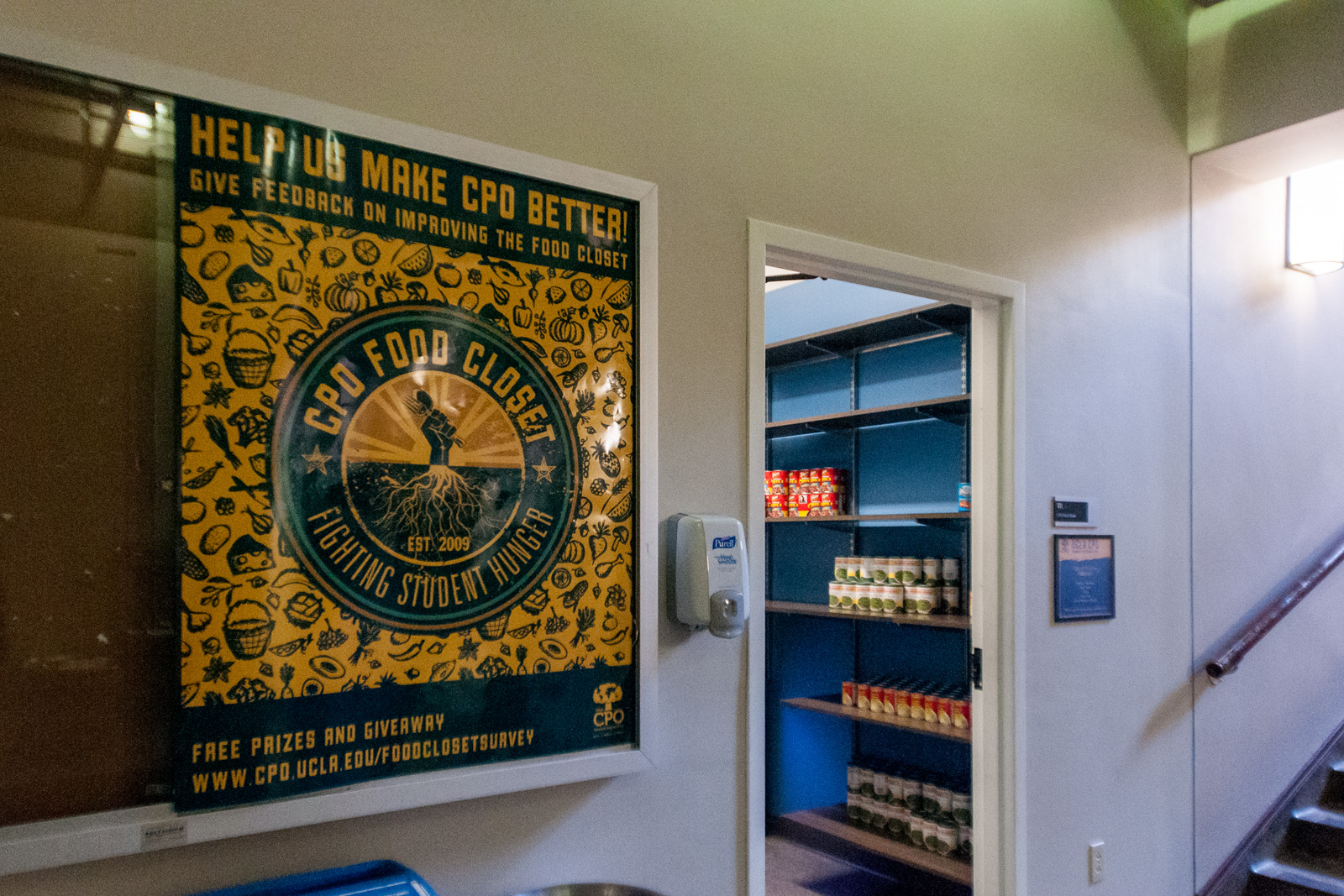Emily Merz: UC must focus on student food insecurity with long-term solutions

UCLA needs to create its own long-term food stamp program to address food insecurity on campus. (Habeba Mostafa/Daily Bruin)
By Emily Merz
May 1, 2017 11:38 p.m.
UCLA tour guides will tell you the campus has the best dining hall food in the country. But far from the comfort of 19 Premier meal plans and omelet bars, many students barely have enough nutritious food to get through the day.
In fact, a survey of undergraduate students’ food security levels by University of California Office of the President found 42 percent of UC students experienced some form of food insecurity during the 2015-2016 academic year, with 19 percent reporting “very low” food security, defined by the U.S. Department of Agriculture as reduced food intake due to limited resources.
In response to these sobering statistics, UC launched the Global Food Initiative in 2014 and sent $3.3 million to UC campuses in July with the hope of improving food security. Based on recommendations from the UCOP report, UCLA has also aimed to improve its food assistance programs, which include meal vouchers and the Community Programs Office Food Closet. However, all of the programs only offer short-term emergency assistance.
UCLA has overlooked what true food security is: access to enough nutritious food at all times.
Thus, UCLA Office of Financial Aid should offer a long-term food assistance program for students who still demonstrate “very low” food security via a supplemental financial aid application assessing students’ needs. Students who demonstrate very low food security should receive assistance in the form of swipes to a dining hall or a stipend for groceries.
Food insecure students currently have three primary avenues for help: the CPO Food Closet, meal vouchers or state-provided food stamps.
Hungry students could go to the CPO Food Closet and grab some high-calorie food to fix their immediate hunger. But a jar of peanut butter or granola bars won’t help students know where their meals will come from for the next week or month.
The food closet provides food to students who are immediately hungry and do not have other options. Although the solution is meant to be temporary, many students continue to use the food closet repeatedly, perhaps because they lack other options.
So while UCLA advertises the CPO Food Closet as a measure to reduce food insecurity, it merely meets students’ caloric demands while doing nothing to resolve their long-term food insecurity.
Students who realize that the CPO Food Closet isn’t sufficient to meet their needs may apply for meal vouchers from Economic Crisis Response, which are more comprehensive. The program offers up to 11 meal vouchers per quarter for up to three quarters, redeemable as swipes into the dining halls or Associated Students UCLA restaurants, according to UCLA spokesperson Rebecca Kendall.
Although meal vouchers provide nutritious meals to students in need, the fact that the average student who received meal vouchers only got up to 11 meals per quarter during the 2016-2017 school year, according to Kendall, indicates that meal vouchers only fight hunger, not food insecurity.
Students can also apply for state-provided food stamps, but most of the time, these government food stamps don’t help.
For example, UCLA officials frequently advertise CalFresh, a California food stamp program that offers up to $194 per month for food based on an applicant’s need, as the solution to students’ food insecurity. However, to be eligible for CalFresh benefits, students must be granted work study, or work 20 hours a week or have a dependent child, which are extremely stringent requirements.
The requirement that a student must work 20 hours a week excludes any student who works at UCLA, which caps student worker hours at 19.5 hours per week. UCLA Food Security Work Group’s effort to hire social workers in order to increase student enrollment in CalFresh has the right intentions, but overlooks the fact that few students would be able to receive CalFresh benefits in the first place.
Thus, UCLA must create its own long-term food stamp program. The food stamp system should have a separate supplemental application on the Financial Aid and Scholarships office’s website, where students apply for financial aid and scholarships. Students who qualify could receive swipes to the dining halls. This is similar to how the meal voucher program operates, but food stamps would provide more than 11 meals per quarter, and would last longer than the current maximum of three quarters.
The number of swipes would depend on a student’s demonstrated need, but they should receive enough swipes that they have access to sufficient nutritious food at all times to live a healthy lifestyle – as per the USDA’s guidelines.
Although implementing a long-term food assistance program will be costly, it is more likely to yield stronger results than investing in numerous temporary programs or trying to get more students involved in CalFresh. A food swipe system for students with “very low” food security would require the administration to shift its focus from fighting hunger to actually fixing food insecurity.
But at a time when the UC Board of Regents has misplaced $175 million for administrative bloat, it shouldn’t be that hard to expend more than the current $3.3 million so the students they are meant to serve have enough food to survive.


